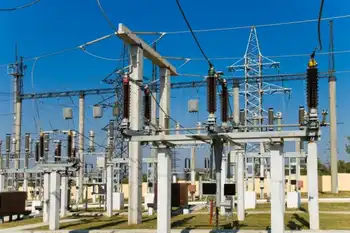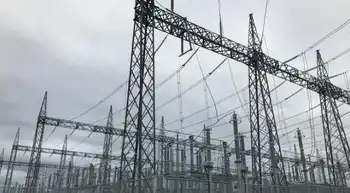U.S. Nuclear Energy Industry Retains Excellent Safety Rating
WASHINGTON -- - U.S. nuclear power plants continued to operate at excellent levels of safety in 2002, according to performance indicators compiled by the World Association of Nuclear Operators (WANO).
The nuclear energy industry last year set records in electricity production and efficiency, while also exceeding industry goals in keys areas like the industrial safety accident rate, unplanned plant shutdowns, and availability of key safety systems.
For the fourth straight year the nation's 103 nuclear power plants achieved record electricity output. Nuclear power plants in 31 states generated a record 780.2 billion kilowatt-hours (kwh) of electricity. That was enough to power 70 million U.S. homes and topped the 2001 production record by 1.5 per cent.
Meanwhile, London-based WANO reported that the U.S. industry's unit capability factor-a measure of efficiency-rose in 2002 to 91.2 percent. This excellent record of reliability is the best among all means of electricity generation, and marked the third straight year that the unit capability factor topped 90 percent.
"The 2002 nuclear plant performance results are outstanding, and they reflect the high standards that the industry sets for itself. Our industry is committed to continually benchmarking against top performers and applying best practices at every opportunity," said Joe F. Colvin, Nuclear Energy Institute (NEI) president and chief executive officer.
Mike Evans, president and chief executive officer of the Atlanta-based Institute of Nuclear Power Operations (INPO) said, "In many ways, U.S. nuclear plant performance is the best it has ever been. The performance indicators reflect not just a year or even a decade of progress, but more than 20 years of continuous improvement."
INPO, which promotes excellence in nuclear power plant operations, analyzes the performance data for U.S. plants compiled by WANO to help set challenging benchmarks of excellence against which safety and plant operation can be measured. Other 2002 performance highlights include:
Unplanned Automatic Plant Shutdowns: For the sixth consecutive year, more than half of the plants experienced no unplanned automatic reactor shutdowns, yielding a median industry value of zero. This performance exceeds the year 2005 goal of one unplanned automatic shutdown per plant.
Safety system performance. For the 10th straight year, key safety systems met their individual availability goals more than 90 percent of the year. The three key safety systems are two main cooling systems and back-up power supplies used to respond to unusual situations. Last year, 97 percent of the key safety systems met their availability goals. Nuclear plants are built with redundant safety systems and backup power supplies so these systems are available, if needed, even when maintenance is being performed on a similar system or component.
Worker safety. Already one of the safest industrial work environments, nuclear plants improved their industrial accident rate for the fourth straight year, with the rate reaching a record low of 0.22 industrial accidents per 200,000 work-hours. This is lower than the industry goal set for 2005. Statistics from other industries through 2001 as compiled by the Bureau of Labor Statistics show that it is safer to work at a nuclear power plant than in the manufacturing sector and even the real estate and finance industries.
Collective radiation exposure. The WANO indicators showed that collective radiation measurements for plant employees remained well within federal safety standards, even though the industry's performance at pressurized water reactors (PWRs) fell slightly short of the 2001 measurement record. This is due in part to the extensive reactor vessel head inspections that have been conducted at PWRs in the wake of boric acid corrosion found last year within the vessel head at the Davis-Besse power plant in Ohio. At boiling water reactors, excellent radiological protection practices led to a drop in collective exposure to workers for the fourth straight year.
Nuclear energy is the nation's largest source of electricity that doesn't pollute the air, and supplies electricity to one of every five U.S. homes and businesses.
The Nuclear Energy Institute is the nuclear energy industry's policy organization.
The Institute of Nuclear Power Operations was established by the nuclear industry in 1979 to promote the highest levels of safety and reliability-to promote excellence-in commercial nuclear plant operations.
Related News

Government of Canada Invests in the Future of Work in Today's Rapidly Changing Electricity Sector
OTTAWA - Smart grids, renewable electricity generation, automation, carbon capture and storage, and electric vehicles are transforming the traditional electricity industry. Technological innovation is reshaping and reinventing the skills and occupations required to support the electrical grid of the 21st century.
Canada has been a global leader in embracing and capitalizing on drivers of disruption and will continue to navigate the rapidly changing landscape of electricity by rethinking and reshaping traditional occupational standards and skills profiles.
In an effort to proactively address the needs of our current and future labour market, Electricity Human Resources Canada (EHRC) is pleased to announce the launch…




